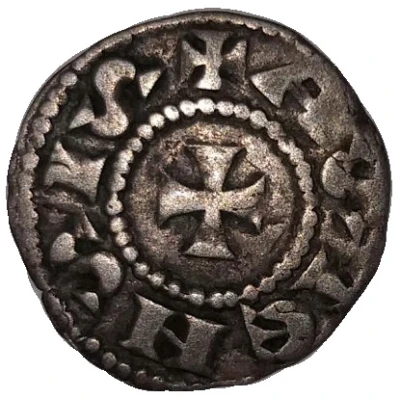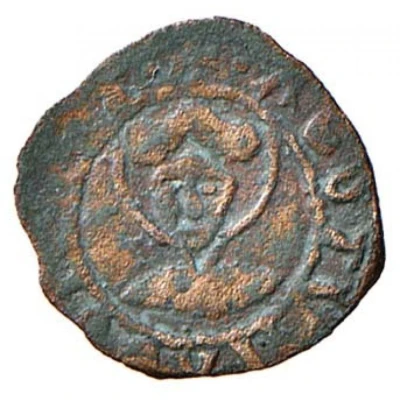


© Giorgi Tsikarishvili
1 Denaro ND
| Silver | 0.70 g | 16 mm |
| Issuer | Asti (Italian States) |
|---|---|
| Period | Free Republic (1140-1314) |
| Type | Standard circulation coin |
| Years | 1141-1240 |
| Value | 1 Denier (1⁄240) |
| Currency | Lira (1095-1553) |
| Composition | Silver |
| Weight | 0.70 g |
| Diameter | 16 mm |
| Shape | Round (irregular) |
| Technique | Hammered |
| Orientation | Variable alignment ↺ |
| Demonetized | Yes |
| Updated | 2024-10-05 |
| Numista | N#173581 |
|---|---|
| Rarity index | 92% |
Reverse
Word REX in a triangle, within inner beaded circle.
Script: Latin
Lettering:
CVNRADVS II
REX
Translation: Conrad II, King
Comment
Conrad III gave the permision to the Republic of Asti to make their own coins in 1141. It seems like they made the inscription of his name as Conrad II instead of Conrad III. There was Conrad II of Italy (1074-1101) but as it seems his title wasn't widespread. If Conrad II of Italy (1074-1101) wasn't widely regarded with his title of II, then Conrad II must have been Conrad III (1138–1152) - the King of Germany and Italy.Republic of Asti (1095-1342) was created by the free commune of the city of Asti. Medieval communes in the European Middle Ages had sworn allegiances of mutual defense (both physical defense and of traditional freedoms) among the citizens of a town or city. These took many forms and varied widely in organization and makeup. Communes are first recorded in the late 11th and early 12th centuries, thereafter becoming a widespread phenomenon. They had greater development in central-northern Italy, where they became city-states based on partial democracy. At the same time in Germany they became free cities, independent from local nobility.
Interesting fact
The 1 Denaro coin from Asti (Italian States) made of Silver weighing 0.70g was minted during the reign of Emperor Frederick II, who was known for his military conquests and cultural achievements. This coin was part of a series of coins minted during his reign, which featured the emperor's image on one side and the Asti coat of arms on the other. The coin's design and mintage were overseen by the local mint in Asti, which was established in the 12th century and was known for producing high-quality coins. Despite its small size, this coin is a valuable piece of history and a testament to the economic and cultural significance of the Italian States during the medieval period.



